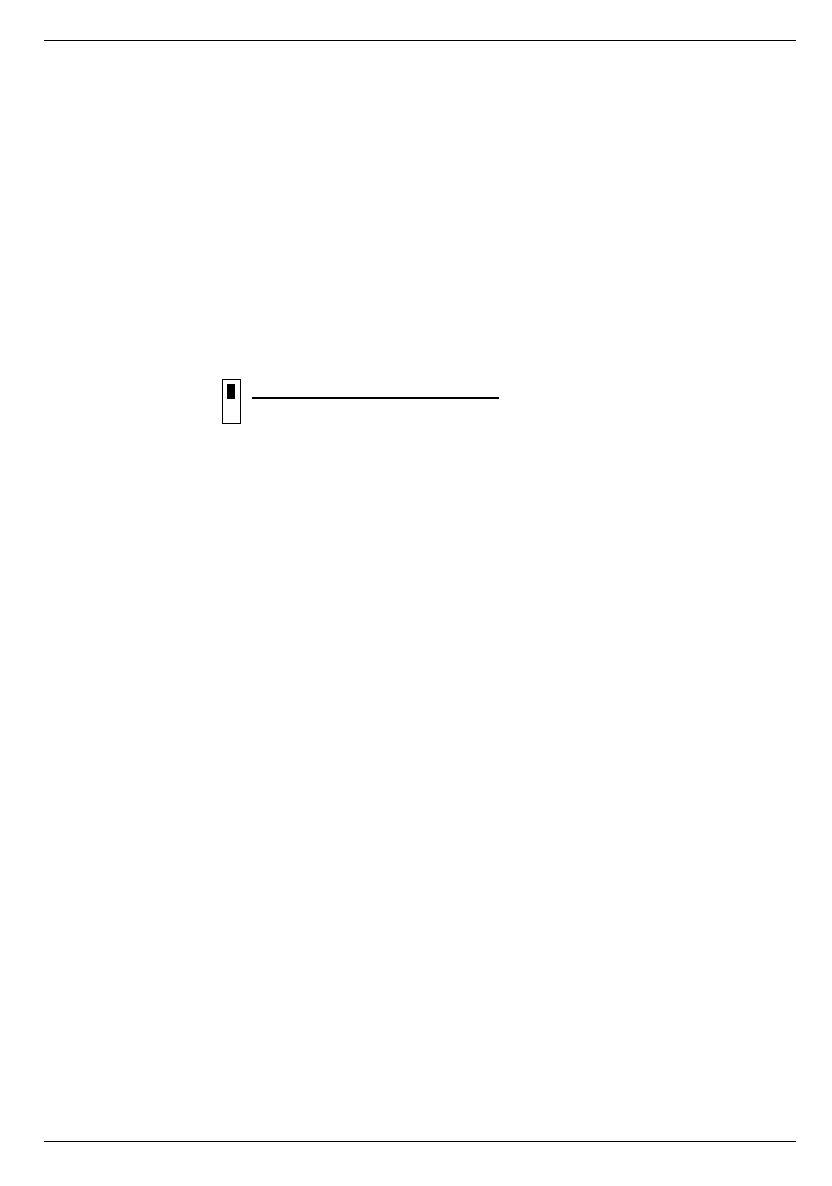
DiSEqC control functions can utilise the 22KHz control signal to switch to the Low Band set-
ting of Eutelsat 13°. All other outputs are fixed in terms of their switching position.
The setting of this switch is irrelevant for and not applicable to DiSEqC-
compatible receivers.
4.2 Setting of terrestrial Inputs
Terrestrial signals can be fed into the system in separate bands, or as a broad band signal.
Use the switch provided to set the required function:
a) Switch in up position
Separate inputs for VHF, UHF and FM are activated.
b) Switch in down position
The VHF and UHF inputs are deactivated, and should be terminated with 75 Ohm resistors.
The broad band signal is fed into the system via the FM (UKW) connector.
The distribution system is designed to cope with the damping effect of cable up to about 20
dB (between LNBs and antenna connector) at 2150 MHz. An active diagonal plane compen-
sation is implemented in order to compensate for cable damping in the satellite range. The
high level of decoupling of the satellite signals means that damping compensators in the
main line connections are not required. The required level of damping can be achieved by
varying the cable type, dependent on the cable length.
The input level should be at 75 dBµV
It is possible to configure the terrestrial frequency range with 42 channels in accordance with
CENELEC regulations. Likewise, due to the carefully designed low-damping system for ter-
restrial reception with diagonal compensation there will be no problem in future to accommo-
date DVB-T or DVB-C (terrestrial or cable-fed digital television).
5 Installation
5.1 General
> We recommend that the star-form distribution should originate in the attic, or near the
centre of the house/building.
> Should the distribution originate in the cellar/basement, we recommend you fit an inte-
rim amplifier Type 9Z between the basic unit multiswitch and the LNBs.
> Please ensure that the levels of the various satellite systems are approximately equal.
> We recommend, particularly with relatively large installations, that you check all
cables for short circuiting before fitting contacts/connectors, as it will take much longer
to search for faults at a later stage.
> Ensure that main connections are not mixed up in any way. You may find it easier to
make the connections in the distribution system using multi-coloured cable.
5.2 Selecting an external unit
> Ensure that your satellite dish is of adequate size for local conditions. We recommend
a minimum diameter of 85 cm, and of 1m in the eastern regions of Germany. This
means that satellite reception will generate a picture with a signal-to-noise ratio of 48
dB.
5
VHF UHF UKW
/ / Breitband
MS11-20-1.qxd 20.09.00 12:57 Seite 5














